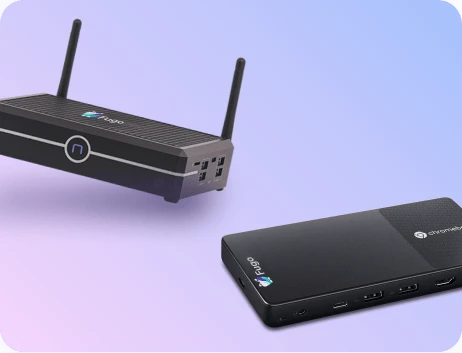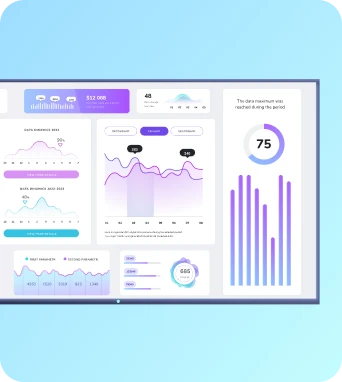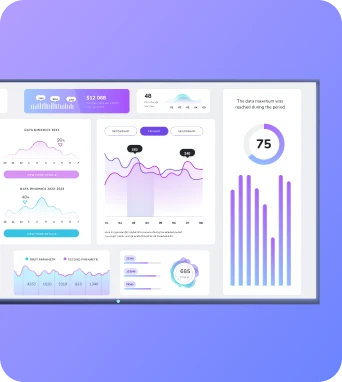Asus Chromebox 5
The Asus Chromebox 5 is a compact Chrome OS mini PC designed for enterprise and commercial use, offering modern Intel processors, 4K-capable graphics and multiple I/O options. It’s well suited as a reliable client for digital signage, TV dashboards and kiosks where secure, remotely managed single-purpose playback is required.
Asus Chromebox 5
Hardware and performance for signage
Asus Chromebox 5 configurations typically prioritise steady throughput and video decoding over raw desktop performance, which aligns with the needs of digital signage. The device commonly ships with Intel processors that include integrated graphics capable of hardware-accelerated H.264 and HEVC playback, enabling smooth 4K output at 60Hz on supported displays. A mix of HDMI and DisplayPort outputs, plus USB-C depending on the model, gives flexibility to drive single or multiple screens. For signage that requires multi-zone layouts or stretched canvas across displays, the Chromebox 5 provides the necessary output options; operators should confirm exact port maps and firmware support for the intended layout before deployment. Storage and memory choices on the Chromebox 5 influence caching capacity and responsiveness. Models with higher RAM and eMMC or SSD storage support larger local caches of media, reducing playback gaps when connectivity is intermittent. From a physical deployment perspective, the compact chassis is simple to mount with VESA brackets or tuck behind TVs, and fan designs in recent models aim to balance cooling with quiet operation in public spaces. Enterprise features such as TPM, verified boot and Chrome OS managed policies help secure a signage endpoint against tampering. For mission-critical displays, pair the Chromebox 5 with rigid power management and UPS options; combine the device’s sleep and wake policies with display timers to conserve energy while ensuring availability during open hours.
Deployment and management with Fugo
When deploying Asus Chromebox 5 units at scale, integration with a cloud CMS like Fugo streamlines content delivery, scheduling and troubleshooting. The Chromebox runs the Fugo player in kiosk mode under Chrome OS, enabling single-app operation that locks focus to signage content. Device enrolment can be handled through Google Admin or Chrome Enterprise Upgrade, which allows remote configuration, policy enforcement and automatic app installation. Fugo complements these capabilities by providing remote monitoring, centralised playlist management and the ability to push urgent messages or fallbacks should a content source fail. For networks with many sites, group policies and tags in Fugo help roll out targeted content across regions, stores or departments without manual intervention at each endpoint. Operational resilience is key for display networks, and the Chromebox 5 supports local caching of playlists and assets so playback continues during network outages. The Fugo player monitors connectivity, reports health metrics and can trigger alerts for offline devices, enabling IT teams to prioritise on-site fixes. Chrome OS automatic updates reduce maintenance overhead but should be scheduled to avoid updates during peak hours; manage update windows via enterprise policies. Security best practices include using managed network profiles, limiting local user accounts, and enabling verified boot. For diagnostics, Chromebox logs combined with Fugo’s telemetry allow rapid root-cause analysis. Together, the Chromebox 5 hardware and Fugo’s management tools provide a streamlined, secure approach to rolling out and maintaining digital signage fleets with minimal onsite intervention.
Compatibility and use cases
Keep the learning going...
Asset tagging
Asset tagging in digital signage is the systematic application of descriptive labels and structured metadata to media files, templates and playlists to enable targeted scheduling, device-level delivery, automated workflows, analytics and integration with content management systems across signage networks and dashboards.
Asus Chromebox
Asus Chromebox is a compact Chrome OS-based mini PC often used as a cost-effective digital signage player. In signage contexts it runs a browser-first stack, boots quickly into kiosk or managed sessions, and integrates with cloud signage platforms like Fugo.ai to display playlists, dashboards and HTML5 content reliably across multiple screens.
Asus fanless Chromebox
The Asus fanless Chromebox is a compact Chrome OS media player designed for continuous operation without moving parts. It delivers stable, low-noise playback and simplified management for digital signage and TV dashboards, offering efficient thermal design, long uptime and straightforward integration with cloud-based content platforms like Fugo.ai. Ideal for public displays and meeting rooms.



